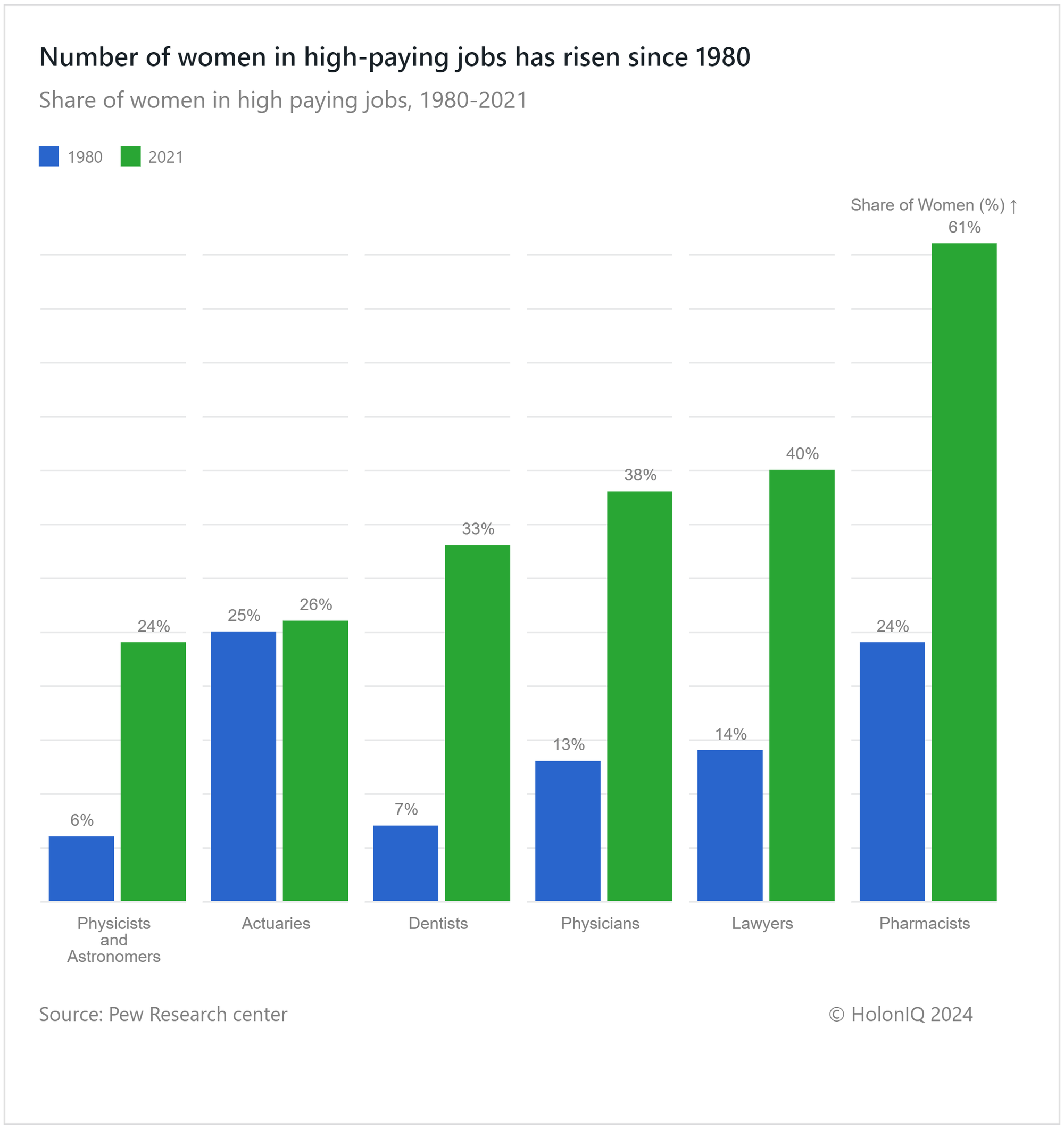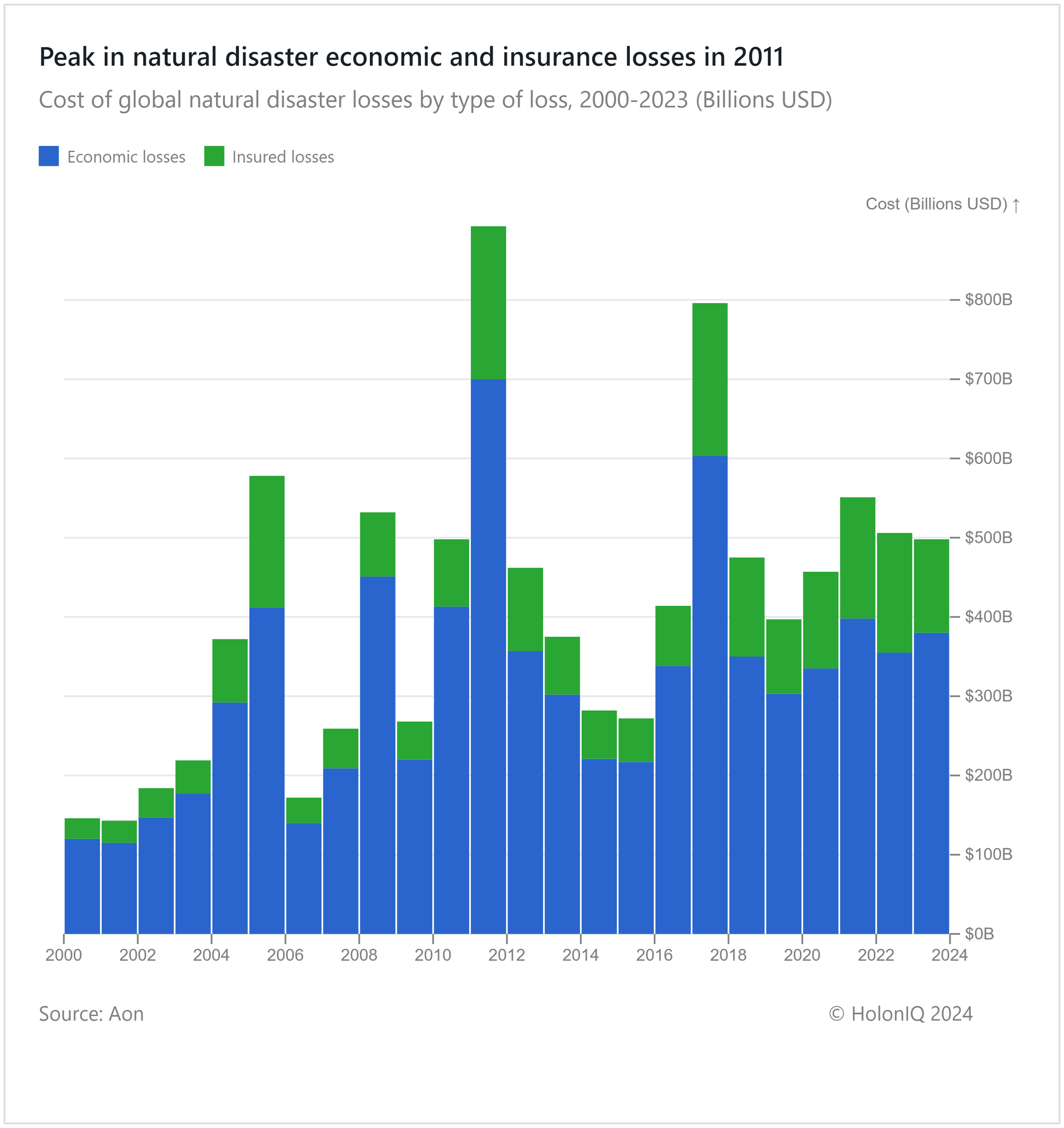🌍 Declining Emissions. Women in Top Jobs. $500B Natural Disaster Loss.
Chart of the Day #50 looks at Women's Employment, Losses from Natural Disasters and Land Use Emissions.
Sawasdee 🍛
Scientists are creating a digital replica of the Earth to simulate potential natural disasters. Insights gained from each trial would be used to prepare for future events. Data shows that the large gender gap in the tech sector has narrowed across the US, EU, and UK over the past four years, despite men continuing to account for the majority of the workforce.
Today's Topics
- 👩 Women's Employment. 3x rise of women in high-paying healthcare jobs
- 🚨 Natural Disasters. $500B natural disaster losses in 2023
- 🌍 Land Use Emissions. Declining global land-use CO2 emissions
For unlimited access to over one million charts, request a demo.
👩 3x Rise of Women in High-Paying Healthcare Jobs

The increase in educational attainment has helped to catalyze a significant shift in the distribution of women across high-paying jobs. This transformative trend is particularly evident in roles in healthcare, such as pharmacists, physicians, and dentists. Since 1980, there has been a remarkable increase in the number of women entering these fields, showcasing the growing opportunities for women in sectors that traditionally had lower participation. Notably, the occupation of pharmacists stands out, with a participation rate reaching 61% as of 2021—three times higher than the 24% recorded in 1980.
🚨 $500B Natural Disaster Losses in 2023

Global losses from natural disasters have remained high, reaching $500B in 2023. On average, this economic toll is nearly 3.7 times higher than the insured losses, highlighting a significant gap in financial protection against these calamities.
The peak in natural disaster costs in 2011 can be attributed to the catastrophic earthquake that struck Japan, leaving a profound impact on the global economy. This event, combined with other natural disasters that occurred worldwide, contributed to an unprecedented rise in economic losses in 2011. The scale of devastation, particularly in Japan, strained insurance capacities and underscored the challenges of managing the financial aftermath of large-scale disasters. 2017 was also characterized by many natural disasters in Asia and North America, which led to significant economic losses.
🌍 Declining Global Land-Use CO2 Emissions

Global efforts to reduce land use carbon dioxide (CO2) emissions have gained momentum. Reforestation projects are underway to enhance carbon sinks, restore degraded forest areas, and promote biodiversity. Countries are taking measures to combat deforestation by enforcing stricter logging regulations and monitoring illegal activities. Sustainable farming practices are reducing reliance on carbon-intensive methods, and governments worldwide are implementing legislation to enforce emission reduction targets, setting limits for industries, and promoting green technologies. International collaborations have strengthened the collective commitment to addressing climate change. These actions have appeared to have an effect, with a gradual decrease in CO2 emissions over the past two decades. Yet, challenges still persist in achieving consistent, significant reductions in land use carbon dioxide emissions, with much room for improvement.
Like getting this newsletter? For unlimited access to over one million charts, request a demo.
Thank you for reading. Have a great week ahead!
Have some feedback or want to sponsor this newsletter? Let us know at hello@holoniq.com
